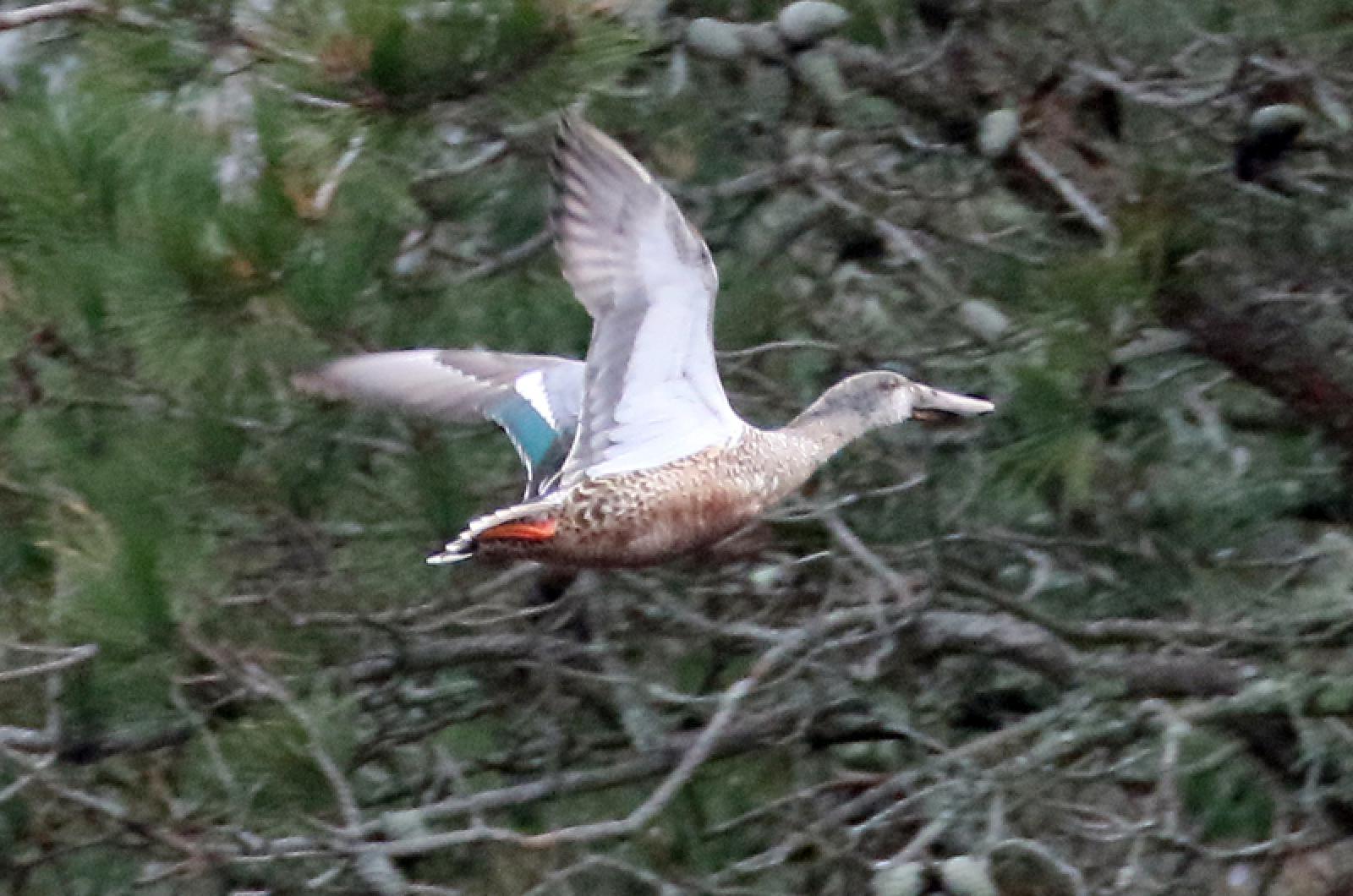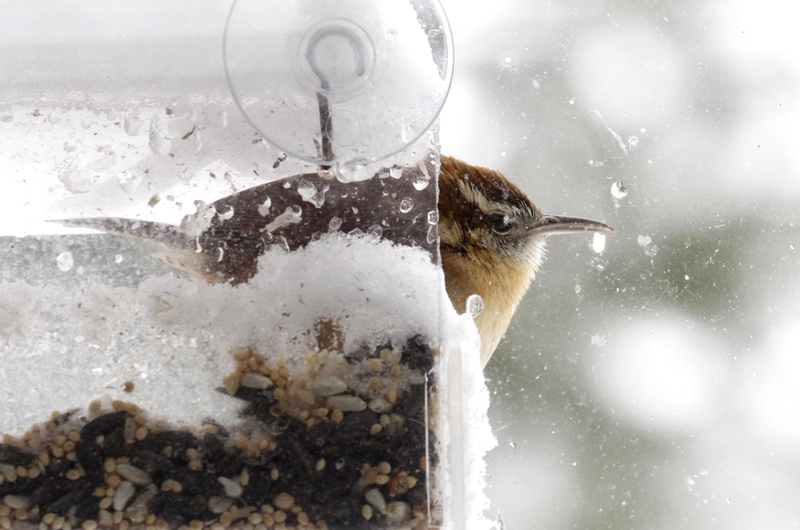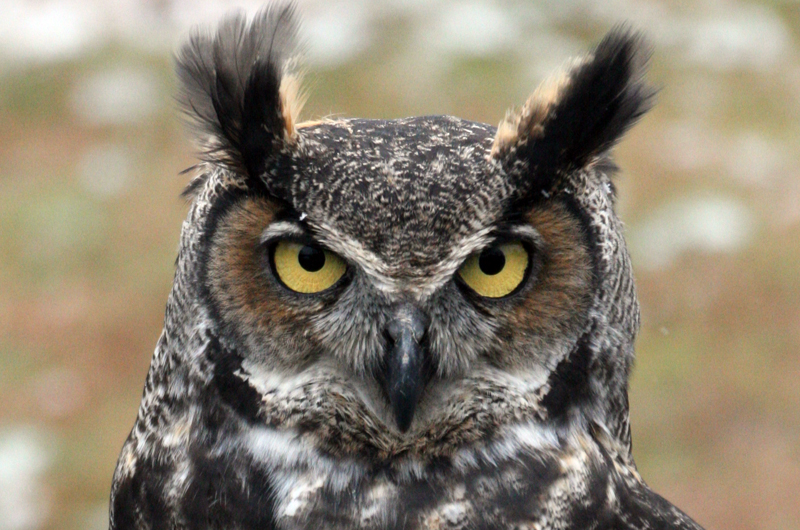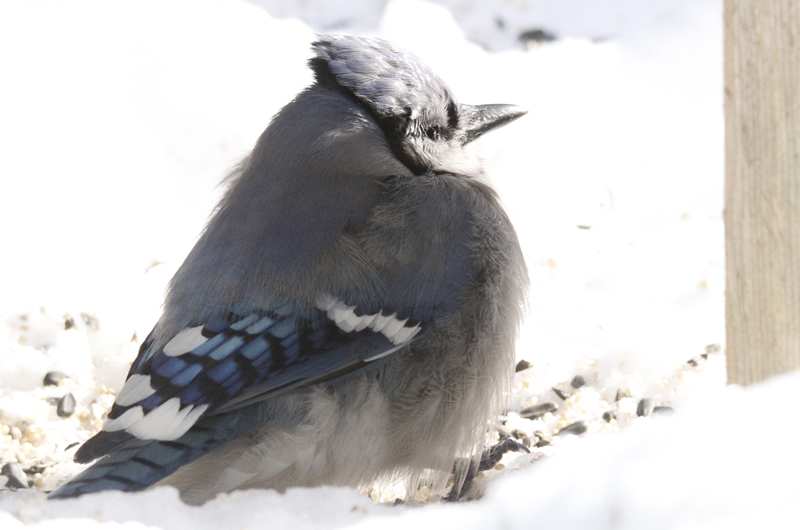Bird news this week centers on the snows of Jan. 6 and 7, when by my measurements from shoveling the white powdery stuff, we got a little more than one foot of snow. Just about everybody I have talked to comments on the increased activity at their feeders.
This increase makes perfect sense. Many birds feed on or near the ground, and these areas are now inaccessible because they are covered with snow. Birds that feed in trees will find many branches covered by the white stuff, and the upwind sides of many tree trunks are also plastered with snow. These snow-covered areas may limit the amount of available food.
Birds have a higher rate of metabolism than we do, and must eat large quantities of food to keep their furnaces stoked. If they cannot get their food from natural sources, they will supplement their natural diet with seeds and suet from bird feeders located within their winter territories. Hence, activity at feeders increases during and after snowstorms. Birds also have colder than normal temperatures to deal with. On the weekend of Jan. 7-8, temperatures were generally in the teens, and they never got above freezing. Birds need to eat more food to keep their bodies functioning during such cold weather.
How do birds know that bad weather is approaching? Apparently they can sense when air pressure is decreasing, warning them of approaching bad weather so they can increase their rates of feeding. But some birds start preparing for bad weather long before air pressure starts to decrease. Experiments have suggested that the birds can hear sounds that are much lower than we can hear. The deep rumble (infrasound waves that move over large distances) may warn them of the approaching storms, triggering appropriate behaviors.
Many observers have reported increased feeding activities of chickadees, titmice, nuthatches (both red- and white-breasted), juncos and woodpeckers. Other notable species include a chipping sparrow observed by Lanny McDowell, a brown-headed cowbird by David Stanwood, eastern bluebirds by Ali Mead, purple finch and bobwhite by Sioux Eagle, savannah and field sparrows at Susan Whiting’s, and two Carolina wrens at my feeder and at Felix Neck.
Other Sightings
Not all of this week’s bird news relates to the cold and snowy weather. On Jan. 6, Jeff Bernier was treated to watching about a hundred crows mobbing an immature Cooper’s hawk. Why were so many crows so irate? First of all, it is a hawk. And the Cooper’s had caught a crow, so it could not easily fly away from its tormentors while it was carrying the crow, which was about as big as the hawk.
Mr. Stanwood heard a great horned owl calling from the woods across Lambert’s Cove Road from the Hoft Farm on Jan. 5.
John Nelson and Gail Peters report two Lapland longspurs on Norton Point Beach and a dozen turkey vultures feeding on a deer carcass at Medeiros Cove (on the Oak Bluffs side of Lagoon Pond) on Jan. 2. There were also nine American wigeon feeding in the shallow waters of that cove.
The northern shoveller that has been in plain view on the little pond next to Morning Glory Farm was still there as of Jan. 4. This duck looks a lot like a female mallard with a humongous spatulate beak.
And of course there are snowy owls. There has been an elusive one on Leland Beach for a while, but now there is a second snowy — all white rather than heavily streaked — on Norton Point, spotted by Rick Dwyer on New Year’s Day. Based on its location, this owl may sometimes be visible from the Katama Bay boat-launching ramp.
Finally, Sarah Mayhew started off the new year by finding a tree swallow at Squibnocket. It is sort of unusual for that species to be a highlight of New Year’s Day, but they do eat berries as well as insects. Warren Woessner notes that there were quite a few of them at the Keith Farm on January 2.
Happy New Year to all.
Southbound migration is pretty much over but there are plenty of birds to find. Please look for them and report your sightings to birds@mvgazette.com.
Robert Culbert leads Guided Birding Tours and is an ecological consultant living in Vineyard Haven.











Comments
Comment policy »